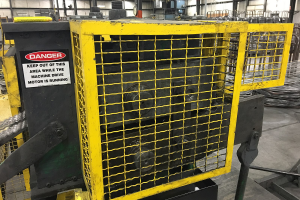November 2016 Newsletter – Tips on responding to new OSHA drug testing, injury reporting guidance
– Jim Stanley, President, FDRsafety Join Our Mailing List
- Disciplining employees for violating overly stringent, “immediate” injury reporting policies.
- Disciplinary policies or practices that result in the disproportionate or retaliatory issuance of discipline to employees who report injuries or illnesses.
- Automatic post-injury drug and alcohol testing, even in situations where the injury or illness is very unlikely to have been caused by employee drug or alcohol use.
- Safety incentive programs that reward employees for being “injury free” or maintaining a low injury rate over a specified period of time.
OSHA’s recently issued guidance makes clear that the agency frowns upon the enforcement of what it views as unreasonable employer policies that require employees to report injuries immediately after they occur. OSHA contends that such policies deter employees from reporting injuries out of fear of discipline for not complying with stringent reporting requirements.
What OSHA fails to recognize is that employers have a very real and legitimate interest in learning of injuries and illnesses as quickly as possible so that employees can receive prompt care and the employer can take action to address any hazards or safety concerns.
- Be cautious in disciplining employees for violating the timing requirements of an injury reporting rule. Where there is clear evidence that the employee knew of the injury and failed to report it in a timely way, discipline is certainly appropriate. However, where the injury is minor or only becomes apparent after the incident that caused it, the employer should carefully examine the facts and only issue discipline if the employee’s delay in reporting was unreasonable.
- Review their injury reporting policies and procedures and consider revising them to remove any reference or requirement that injuries be reported “immediately.”
- Revise injury reporting policies and procedures to require employees to report work-related injuries or illnesses as soon as possible after becoming aware of the injury or illness. It is entirely reasonable and legally defensible to require employees who are aware that they suffered an injury to report that injury before they leave the facility at the end of their shift, or within 8 hours of becoming aware of the injury, whichever is earlier.
- Exercise caution before issuing discipline for violation of general or vague safety rules, such as “work carefully” or “maintain situational awareness.”
- Avoid suspending employees without pay to investigate a reported injury, unless there is clear initial evidence that the employee violated safety rules.
- Not bar employees who report injuries from being in certain positions or obtaining promotions, unless there is reasonable evidence that the injury was caused by violation of a safety rule(s).
- Prohibit retaliation, harassment, or intimidation of employees who report injuries and provide procedures for employees to report such misconduct.
- Apply safety rules consistently so that discipline is issued any time there is a violation of a rule, not just a violation that results in a reported injury.
It is important to note that nothing in the revised anti-retaliation provisions prohibits employers from disciplining employees for violating legitimate work or safety rules, even if the same employee who violated the safety rule also suffered and reported an injury. Do not be scared to discipline, just be cautious.
- Conduct post-incident drug testing in accordance with federal law (Department of Transportation rules, etc.) or a state workers’ compensation system. Drug testing required or incentivized by federal or state law cannot be viewed as retaliation.
- Conduct a fact-specific analysis of the circumstances leading to the injury and carefully consider whether drug testing is necessary after incidents or events that are unlikely to have been precipitated by drug or alcohol use, such as an employee reporting a repetitive strain injury or an allergic reaction to a chemical.
- Require drug and alcohol testing where there is reason to believe that the incident or injury may have been caused by impairment, carelessness, or disregard of safety procedures or rules.
- Consider implementing “reasonable suspicion” drug testing and train first line supervisors, managers, and safety personnel to recognize the signs and symptoms of possible alcohol or drug use.
- Make clear that drug and alcohol testing will be required after any accident or safety-related incident (such as “near miss” incidents), regardless of whether an injury has occurred. Conducting testing even when no injuries have occurred will mitigate any inference or accusation that the employer only conducts drug and alcohol testing to deter employees from reporting recordable injuries.
OSHA has repeatedly expressed concerns with safety incentive programs or employee bonus systems that focus on lower numbers of reported injuries or illnesses. OSHA claims that such programs deter reporting because employees will be reluctant to lose a significant bonus or reward or will suffer peer pressure from co-workers whose bonus or reward is also jeopardized by the reporting of an injury or illness.
It is also important to note that OSHA will place more scrutiny on safety incentive programs that are targeted at specific departments or groups of hourly employees, first-line supervisors, and other lower level management. OSHA believes such programs are more likely to incentivize lower level supervisors and managers to discourage employees from reporting work-related injuries and illnesses.
Despite OSHA’s unsubstantiated assertions and concerns, safety incentive programs can still be a valuable part of an employer’s safety and health program. Employers should evaluate their safety incentive program and consider:
- Providing incentives or rewards based upon a mix of positive and negative safety factors. Positive safety factors include things such as participation in safety training or identifying and correcting potential hazards. Negative safety factors include goals such as achieving a pre-determined low rate of recordable injuries or going a certain period of time without a recordable injury.
- Conducting routine audits or safety inspections and basing the reward or bonus not on the number of reported injuries, but on the results of the audit or inspection. If the audit or inspection finds few or no violations of the company’s safety policies and procedures, a reward or bonus is perfectly appropriate.
- Only applying injury-rate based incentive programs to higher-level management personnel, who are less inclined and capable of directly or indirectly discouraging reporting.
- Base the incentive program upon corporate-wide injury and illness data, as opposed to department or facility-specific data.
- Include injury and illness rates and other safety criteria as one of many factors in awarding an overall company bonus or reward.
Over the past few years, employers and safety professionals have been bombarded with rules and news from OSHA about what they cannot do. In the face of all this, many employers and companies have lost sight of the fact that they, too, have interests and rights to protect.
OSHA’s new anti-retaliation provisions and enforcement stance should certainly be kept in mind when implementing and managing a safety and health program, but contrary to popular belief, they do not require wholesale elimination of disciplinary rules, timely injury reporting policies, post-accident drug testing, or safety incentive programs.


